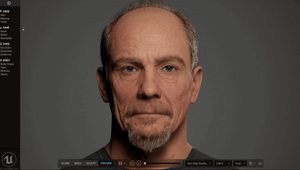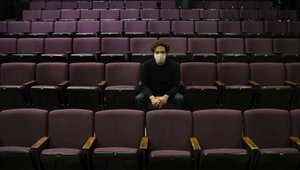
Covid-19 Accelerates the Fashion World’s Adoption of Technology

Above credit: LCF x Microsoft
Technology has the potential to resolve many of the challenges the fashion industry faced pre-Covid, but will also allow the industry to be more resilient, relevant, and smarter in a post-Covid world. Matthew Drinkwater, head of the Fashion Innovation Agency (FIA) said that going back to business as normal is not an option: “This is an opportunity to redefine business models and build a more sustainable, progressive future” for the fashion industry.
Here’s how technology can aid the fashion industry:
Lower Ecological Impact and Waste
The fashion industry is responsible for 10% of annual global carbon emissions, more than all international flights and maritime shipping combined. At this pace, the fashion industry’s greenhouse gas emissions will surge more than 50% by 2030. It’s not sustainable. Technology has a huge role to play in lowering the environmental impact of the industry. For example, The Fabricant, a fashion house that only produces digital clothing aims to show the world that clothing does not need to be physical to exist.
The company believes the digital-only fashion sector will open up new creative opportunities while promoting sustainability and reducing the negative environmental impacts of the fashion industry, both behind the scenes and in our future digital wardrobes. A digital supply chain can not only decrease waste, but it can also increase production speed, offering a win-win for companies working to become more sustainable while cutting costs. In November, Tommy Hilfiger announced that it was switching to 100% digital design by 2022. This switch has been two years in the making and will see the PVH-owned brand only use 3D design to create, develop, and sell samples from its Spring 2022 apparel collections onward.
Faster Speed to Market
Digital design is gaining traction in the industry as it allows brands to design items quickly and, crucially right now, remotely. Traditional sampling and prototyping, for example, can take three months, but 3D design can render a realistic-looking shirt in one day. Once created, the three-dimensional, photorealistic digital models of products can be used in a variety of situations, including marketing materials, virtual showrooms, customer-facing e-commerce pages, and augmented reality experiences.
CLO is a 3D fashion design software program that is being widely adopted by both independent designers/students and more established fashion houses, supporting the creation of virtual, true-to life garment visualisation with cutting-edge simulation technologies. CLO reduces the design preparation time and streamlines the process, allowing users to finalise styles far ahead of regular production lead times. With the ability to create unlimited graphic placements, colourways, and engineered print layouts, endless possibilities can be explored at zero cost. This summer it is expected that a CLO/UE4 plugin will be ready for beta which is another significant step forward for the fashion industry to embrace real-time technology.
Design platforms like Gravity Sketch can help teams that create, collaborate, and review in 3D speed up the process by providing intuitive tools and removing friction from workflows. Designers can open the application on their tablet and create a 2D drawing with their pen and then pull on a VR headset to turn the sketch into a 3D work and continue manipulating it. The workflow can also be implemented in reverse—starting in VR and then switching to tablet. Or the 2D stage can be skipped completely, speeding us the process further, in favour of 3D models that can be collaborated on in real-time by designers in different locations.
Closing the Gap Between Online and Offline
Offering a digital ‘try-before-you-buy’ allows retailers to close the gap between online and offline channels. A customer can try on the product on the screen and see how it looks.
ASOS kicked off the year with the launch of ‘See My Fit’. The AR tool allows you to view an outfit on 16 different body shapes to give shoppers an idea of what the clothes would look like on themselves. Now the retailer is diving deeper into AR as it works to 'simulate real-life model photography in response to the Covid-19 pandemic'.
Tim Carey, senior content manager at ASOS Studios, said: “It’s a great tool for us to have at our disposal, helping us drop new items on site each week and provide customers with realistic product images in a studio setting while protecting the well-being of our models and staff.”

Credit: ASOS
REWIND is currently working on an immersive fashion concept and looking for partners. Get in touch to find out more.










